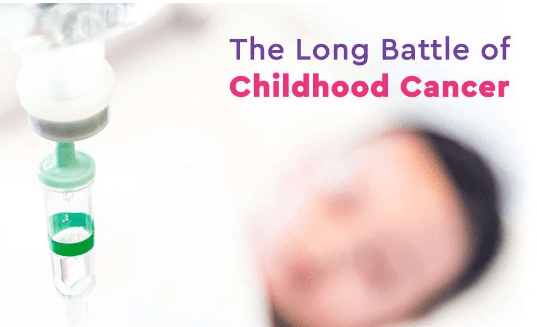Young Rajesh (name changed) was an exuberant child. Or so his mother describes him through tears and trepidation. Exuberant is not a word you would use to describe the child that lies shivering in front of my eyes on the couch. He was weak but he seemed to be using his last ounce of energy trying to repel me from examining him. As someone who had diagnosed and cared for such children for a while now, even a perfunctory examination was enough to suspect that I would be dealing with a case of acute leukemia in that 5-year-old. The multiple swellings in the neck, that irritability, the bleeding spots on his skin and the unmistakable pain in his bones were the telltale features. A small test called peripheral smear was done and the Pathologist calls up in a short while to confirm my fear. My fear is not to treat the disease really! It’s how to treat the family!
I believe no other cancer tests a doctor-family combine the way an acute lymphoblastic leukemia does. Shortly called ALL, it’s an acute affliction of the bone marrow where an over-proliferation of one cell line completely overtakes the rest of the cell lines. In plainer terms, this means that apart from a high white blood cell count, the patient would develop a very low hemoglobin and low platelets. Hence the symptoms of fever, fatigue, and bleeding. Without prompt diagnosis and immediate treatment, death is imminent and quick. Three months is what I tell the family!
Fortunately, advances in modern medicine have enabled cure in most of these patients (almost 80% of patients with a favorable risk profile of this disease gets cured). Unfortunately, the treatment is very long drawn. First, it would mean an admission for one month in the hospital hoping to bring the entire visible disease in the bone marrow to a zero. This is a crucial period where there would periods of prolonged low counts and the chances of complications are at the peak! Even if such control was achieved, there would be different phases of treatment which altogether last for two and a half years! A treatment of such a long duration is the only way to cure a disease which is notorious for its recurring nature. In fact, relapsed/recurrent ALL is the third most common childhood cancer, the first being a newly diagnosed ALL. Now imagine telling this to the parents of a child with this diagnosis. Imagine trying to make them understand, in their state of mind, the various aspects of care AND the duration of treatment. Add to it the uncertainty of cure – though high, there is always a chance of relapse in the first five years of treatment. Quite understandably, most of the families would be bewildered. There would be confusion, part denial, lot of uncertainty and the devil of them all – how to deal with the financial burden!
Rajesh’s parents sat through my initial counseling session. I have the final diagnosis by the way of flow cytometry, a diagnostic modality to confirm the disease. I could hardly tell if they were following me, so I do what I do. Repeat and pray. Slowly they start to breakdown. Father attempts to send the mother away, but she wants to stay. I try to make them see that this is a favorable risk profile and they cling on to it with all the greed in the world. That is enough to put me on the back foot as I’ve seen enough ‘favorable risk’ diseases relapsing! But even greater worry is how they would manage with the duration of treatment and the financial aspect of it!
Most of the families belong to low and lower-middle socio-economic strata and are dependent on a sole bread winner able to go to work on a daily basis. One can only imagine the financial implication if that person has to be curtailed in his/her attendance to job because of the child’s treatment. Fortunately, the Government of Andhra Pradesh has a public health scheme for the underprivileged, which could cover the treatment cost. Though a scheme which has its limitations, I found that it is workable for childhood ALL treatment. When I first joined Mahatma Gandhi Cancer Hospital and Research Institute, a preamble for treating such cases was not existent. In fact, that’s the case with the whole of City of Visakhapatnam unfortunately! The reasons were manifold, some serious, some manageable. Most of the patients of such illnesses used to be referred to hospitals in bigger cities like Hyderabad, Chennai, Mumbai, etc. Some families were able to take their children to such places. Most couldn’t, and all those children died! Even for those who were able to, the hardships of their families to manage such treatment can only be imagined!
I still remember the day I approached the managing director of our hospital, that such cases could be treated here. I’m sure Dr. Murali Krishna Voonna would’ve been skeptical, but he didn’t show it! He gave a reassuring nod of the head and I left the room. From then started a year of trials and tribulations. It’s a big teamwork and apart from me, most of my team is new to the delivery of this treatment! They learnt along the way, and I learnt along with them. Results followed. I daresay they were better than what I imagined. The team became bigger and better.
Rajesh’s treatment got initiated. Over the course of one month, he went through several doses of chemotherapy, multiple units of blood transfusions, episodes of severe infections. But I could see he was getting better. More than the tests, the activity of a child tells the course the disease was taking. He started to become active and I started to become hopeful. The day I did the test to see if his disease was indeed under control is a test for the month-long effort of the entire team. A lack of control would be a death knell. It wasn’t the case to be. Rajesh’s bone marrow at the end of one month was as good as new! His parents were overjoyed. I was happy too, but I know that it’s a job half done only!
The real test of anything in this world is a test of time. The test is for Rajesh’s parents now. I was fairly confident of the young child with the ‘now normal’ bone marrow able to pull it across the numerous other regimens of chemotherapy that he still had to undergo. But would his parents be able to bring him for treatment consistently at the defined intervals?
His mother stood up to the task. The kid was never late for any of his scheduled visits. He completed the whole course of treatment on time. Somewhere along the course, I realized that I’ve not seen his father for a while and I enquired about the same. I learnt that his father has to go away to earn for his family and his mother makes the travel of 200km to the hospital, each time it was needed, with the young kid in tow. She makes it a point to speak to families of other kids who were newly diagnosed. As I introspect, she’s not a lone example. Such is the case with many of the children who are getting treated at our center and most of them have a long duration of treatment. And more often than not, it’s their mothers who stand up to the task! I salute their undaunted spirit and strength!
Rajesh has reached the end of his treatment. I later realized that that day was his last admission for treatment. I was in a hurry that day and was doing a ‘curtailed round’, focusing on the sicker patients and waving byes to the fairly stable ones. Rajesh’s mother reached out to me and requested me to see his child once. I asked her if something was wrong. She shook her head and told me smiling that her son is so used to my smiling down on him and taking his wrist in my hand while enquiring his wellbeing, that he doesn’t want me to leave without doing that again to him! I was pleasantly amused. As I started towards his couch, I saw that the boy was neatly dressed and combed, like he usually is. Again, a bow to his mother! He was happily smiling and as I neared him further, he raised his arm for me to reach his wrist.
Over the last 3 years, the Medical Oncology team at Mahatma Gandhi Cancer Hospital and Research Institute has treated nearly 300 children with cancers. Close to 200 of them were cases of acute leukemias. We have lost a few, but we have saved the most. Along the way, we learned. Not just of the treatment, but also of the indomitable fight and human spirit. The journey has taken a new beginning in the form of establishment of a ‘Bone Marrow Transplant unit’, the first of its kind in the state of Andhra Pradesh. With this, we aim to be a place which will offer the complete gamut of services for blood cancer patients. A diagnosis of such a case need not mean uprooting the whole family anymore for people of this region!







